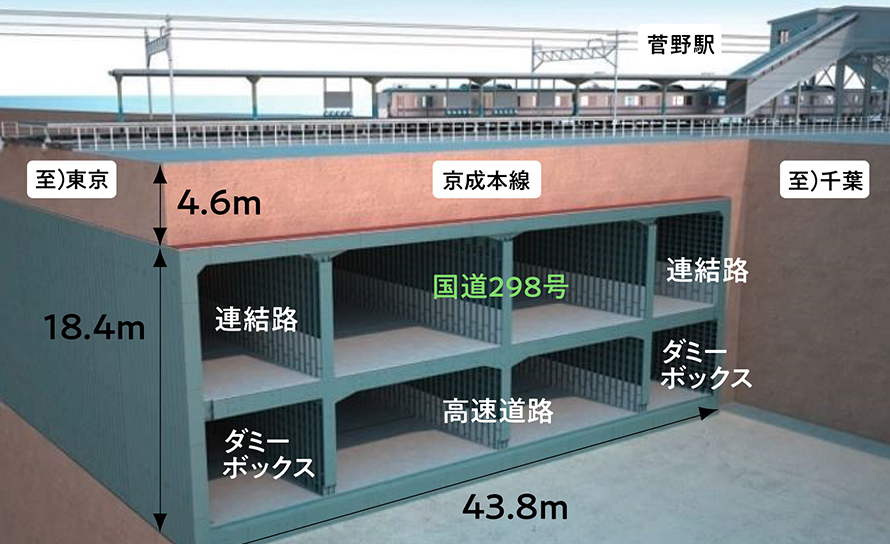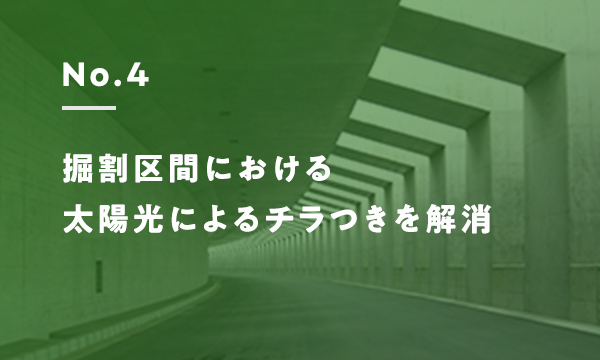

・ JR Joban Line, Hokuso Railway, Keisei Main Line, JR Sobu Main Line, Toei Shinjuku Line,
Crosses the Tokyo Metro Tozai Line
・ At the intersection with the railway, Ensuring transportation functions during construction
・ Construction is carried out by adopting a safe, reliable and rational construction method suitable for each intersection
Keisei Main Line intersection


・ To minimize the impact on the J Keisei Main Line, R & C
(Roof & culvert) method adopted * The largest cross section in the world
・ After building a box culvert, pull it under the track
(Distance from the track 4.6m)
・ The box culvert for this construction is 18.4m high x 43.8m wide x extended
Large-scale structure of 37.4m quadruple two layers
・ Building a box culvert inside the starting shaft
・ Towing under the track while excavating with the face inside the culvert

Box culvert (1st and 2nd box) construction

H26. October shooting

Box culvert (first and second box) tow

H27.7.9 Shooting

Box culvert (3rd and 4th box) reached

H28.5.27 shooting
JR Sobu Main Line intersection


・ Building a box by relocating existing viaducts with new girders while making use of the sales lines where trains pass every few minutes


Excavated by pneumatic caisson method (*) before and after the elevated Sobu main line to construct a box (width 35.8m, extension 19.75m)
* Pneumatic caisson method
An airtight work room is provided below the caisson frame, and compressed air equivalent to the groundwater pressure is sent into this to excavate while preventing the ingress of groundwater and sink the structure underground.


After installing the gate-type pier on the box, replace the existing viaduct by constructing the underpass girder (first technology in Japan)


Pneumatic excavation directly under the viaduct to build a box
Manama River intersection


・ Because the Expressway section passes under the Mamma River, the Mamma River is cut off for a detour and a box is constructed.








